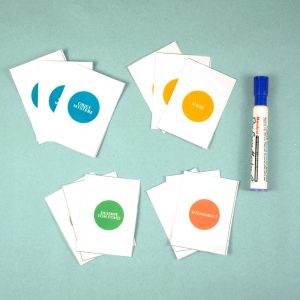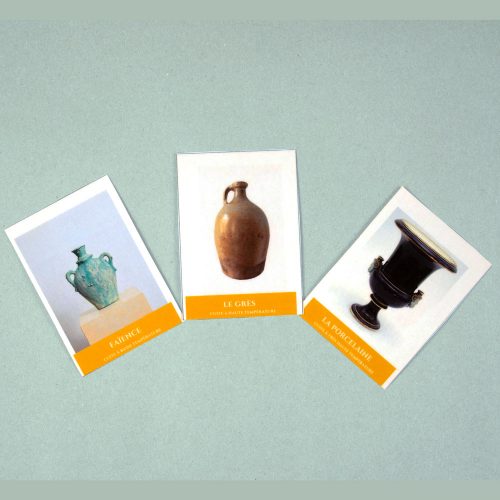Present Your Masterpiece!
The day of the vernissage has arrived!
Now it’s time to present your work to the public (or in this case, to your classmates).
Your new works of art are inspired by Laurent Craste, a ceramic artist whose contemporary vases are peppered with historical designs, creating an anachronistic effect that inspires wonder.
Grade 3-4
Duration : 30 minutes

Objective
Laurent Craste likes to surprise us with his creations. The results are always shocking!
In the style of Laurent, your task is to use your imagination to marry an historical event with an antique vase. Somewhere between the tragic and the comic, it’s up to the artists to create a unique work.
Guidelines
Watch ”Laurent Craste – Démarche artistique” (English subtitles).
In small groups (3 or 4), draw one card from each pile.
In your group, plan how you’ll mix the ideas on each of the four cards and depict them together on the vase. Present the final work to your audience (the class).
Bridging history and imagination, students will explore a significant event in the past, present, or (fictional!) future and explain how they made these artistic choices.
Material
- Dry erase marker
- Print cards by categories: Annexe à imprimer

Steps
1
Divide the class into groups of 3-4.
Each group draws one card per theme.
2

The vase cards indicate the ceramic type and the style of vase.
3

The event cards will provide an important event from the past, present, or future (in this last case, students will have to imagine one).
4

The random objects on the mystery cards will have to integrated into the final masterpiece: it’s up to you to decide how!
5

The “Draw your own” cards give students the choice to add a motif, symbol, or colour of their choosing to the vase. These can either complement or clash with the final product!
6
In groups, think about how you’ll present your work, just like at a real exhibition launch.
Food for Thought
Creating a work of art is anything but easy: it requires ample material, fresh ideas, and total commitment. With this workshop, students will learn to integrate art and history, bridging reality and imagination.
Just like the art of Laurent Craste, the students’ work will end up somewhere between comedy and tragedy. As we’ll learn, having the idea for an artwork is one thing, but knowing how to talk about it is another.
What aspects will the student artists choose to highlight? What will be their reasoning for each of the artistic choices they’ve made?


